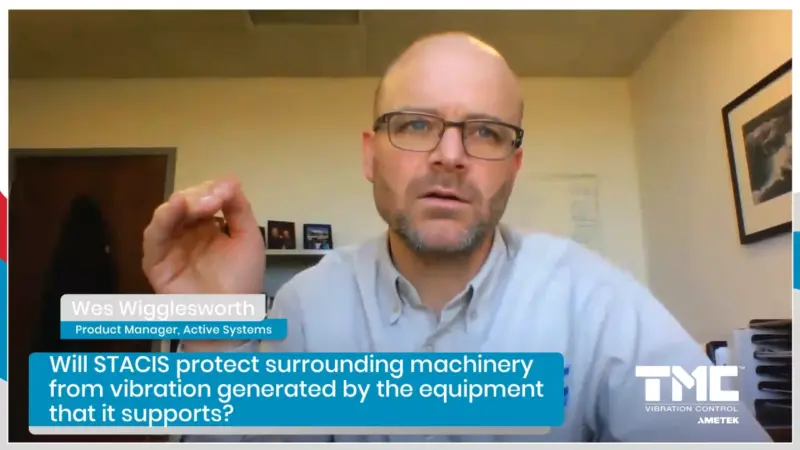West Wigglesworth of TMC Distinguishes Between Active and Passive Vibration Control Systems and Highlights Key Considerations for Optimal Selection
In his recent discussion, Wes Wigglesworth of TMC eloquently demystifies the intricate nuances of vibration control and particularly emphasizes the differential features of active and passive vibration control systems. He begins by identifying the three pivotal components that characterize an active vibration control system: an inertial sensor that measures the vibration, a control system with a feedback loop, and an actuator.
Wigglesworth outlines the basic principles behind passive systems such as simple rubber or steel springs and air chambers, emphasizing their simplicity but also their limitations in mitigating high-frequency vibrations. Moving up the complexity scale, he delves into pneumatic isolation, a system offering improved performance due to its softer isolation nature but demanding a more complex setup and a continuous air or nitrogen supply.
While pneumatic isolation is often mistaken for active vibration control, Wigglesworth asserts that it is inherently passive, attenuating floor vibrations without the active intervention of an inertial sensor or a feedback/feed forward loop. However, active damping, a more sophisticated extension of pneumatic isolation, employs a sensor mounted to the payload which signals back to the controller to regulate the air inflow and outflow of the isolator, thereby controlling the resonance of the air isolator.
The discussion proceeds to the exploration of parallel type active vibration control systems, a more advanced category. Wigglesworth uses TMC’s “Electro-Dam” as an example of this system, noting its suitability for semiconductor manufacturing tools due to its efficacy in cancelling stage motion.
The final type of active vibration control system that Wigglesworth discusses is the serial type active vibration cancellation system, characterized by its simplicity, advanced technology, and ease of setup. Using TMC’s “Stasis” system as a representative example, he applauds its unique ability to support tools installed in environments with low-frequency vibration emanating from the floor, thereby preventing performance limitations of the tools.
In summary, Wigglesworth’s enlightening discussion on urges anyone considering an active vibration control system to ask critical questions: Does the system incorporate an inertial sensor? Is there a feedback or feed-forward control loop? And is there an actuator to counteract the signal from the inertial sensor in the control system? This advice underlines the importance of understanding the inner workings of active vibration control systems for optimal selection and utilization.




